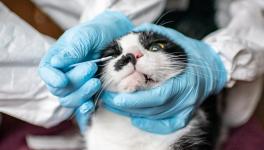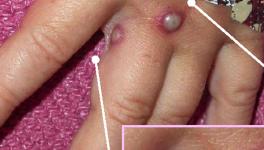Chances of Finding the Direct Ancestor of COVID Virus Very Poor

Image Courtesy: Wikimedia Commons
The pandemic coronavirus SARS-CoV-2 originated in bats and made a jump into humans—scientists know this. However, an enduring mystery of the pandemic is the exact origin of this virus and how this closest ancestor made this jump from animal to human. One of the profound ideas is that an intermediary animal is involved in the jump of the coronavirus from animal to humans, which means the coronavirus jumped to the intermediary animal first and later to humans and drove the pandemic.
Now, in a twist, a group of virologists opine that finding the direct ancestor of the SARS-CoV-2 virus may be very unlikely. They also say that the COVID virus probably shared an ancestor with the coronaviruses found in bats more recently than was thought. The group of virologists presented their findings at the 7th World One Health Congress held in Singapore on November 8. They are also going to publish it in a peer-reviewed journal.
Since the beginning of the pandemic, scientists have tried to find out the origin of the coronavirus. That coronaviruses have origin in bats has been well known. But all of these coronaviruses don't jump to humans. To know the exact origin of SARS-CoV-2, scientists compared the virus's genetic material with many others. But they failed to find the exact origin. This was also the basis of the hue and cry that SARS-CoV-2 did not have a natural source as its origin but was developed in a laboratory at the Wuhan Institute of Virology. The lab in question housed several bat-originating viruses for research.
Even former US President Donald Trump was one of the promoters of this allegation on the Chinese lab, which led to declaring the SARS-CoV-2 virus as the 'Chinese Virus'. However, as time passed and numerous findings came out, it is now largely believed that SARS-CoV-2 had a natural origin. Now a group of virologists has come out with an explanation for why scientists may never find out the exact origin of the pandemic virus.
It has been known that SARS-CoV-2 and several other closely related bat coronaviruses shared a common ancestor some decades ago. But, these viruses used to exchange parts of their RNAs with each other, which is known as recombination. RNA is the genetic material of these viruses, and in recombination, they exchange parts of their genetic material with one another. In their presentation in Singapore, the group of virologists said they compared fragments of the genetic materials of the coronaviruses. Their analysis suggests that some portion of the bat coronaviruses and the SARS-CoV-2 shared a common ancestor until 2016, just three years before the pandemic's start. According to the researchers, they have tried to narrow down the time between SARS-CoV-2's ancestor originating in bats and that of the virus jumping to humans.
The researchers infer that it would be near impossible to pinpoint the exact ancestor of the SARS-CoV-2 in bats due to extensive recombination among it and several other bat coronaviruses.
Joel Wertheim, a molecular epidemiologist at the University of California and a contributor to the present work, in a statement, commented about the implications of their finding, saying, "SARS-CoV-2's direct ancestor probably formed from several viruses and has been recombining and mutating in bats ever since. Sampling bats for coronaviruses could possibly identify viral fragments that are more closely related than those found in known coronaviruses so far, but probably won't reveal one direct ancestor."
From the early period of the pandemic, scientists, especially from southeast Asia, have been actively sequencing the coronaviruses in bats and other mammals. But they have failed to locate a progenitor of SARS-CoV-2. The new findings shed some light on why the scientists could not locate the exact origin.
With the method of whole genome sequencing, scientists have deciphered the entire sequence of several viruses' genetic material (either DNA or RNA). But, this method overlooks the role of recombination, the researchers say. To discover the role of recombination, the researchers compared 18 bat and pangolin viruses closely related to SARS-CoV-2 by splicing them into 27 fragments.
Remember that pangolin has been thought to be the intermediary animal via which the coronavirus jumped to humans from animals.
"Each segment with a few hundred to a couple thousand nucleotide sequences long — has a different evolutionary history," said Spyros Lytras, who presented the findings at the Singapore conference. Lytras is an evolutionary virologist at the University of Glasgow, UK. Their work has been posted on a website.
Get the latest reports & analysis with people's perspective on Protests, movements & deep analytical videos, discussions of the current affairs in your Telegram app. Subscribe to NewsClick's Telegram channel & get Real-Time updates on stories, as they get published on our website.
























